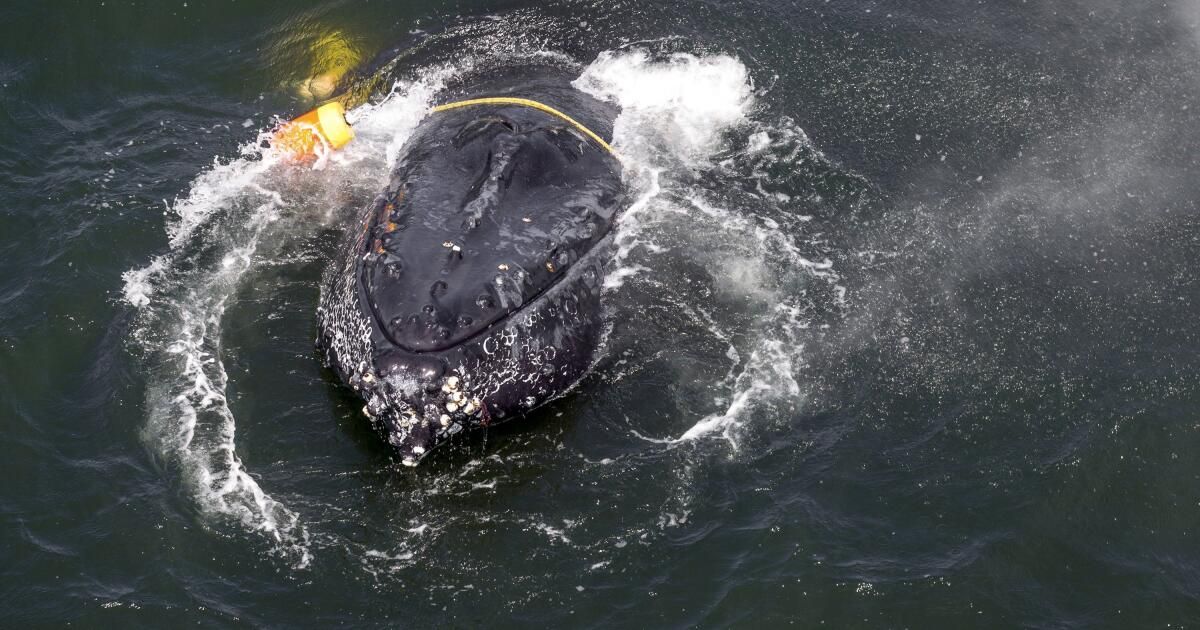The number of whales that are entangled in fishing, line, buoys and other miscellaneous strings from the coasts of the United States reached a record in 2024, with California taking the ignominious advantage.
According to the National Oceanographic and Atmospheric Administration, there were 95 tangled whales confirmed in American waters last year. Eighty -seven were live animals, while the reports of eight arrived after the animals had died.
On average, 71 tangled whales are reported every year. There were 64 in 2023.
More than 70% of the reports were of coastal waters against California, Alaska, Hawaii and Massachusetts. California represented 25% in 2024, most in the areas of San Francisco and the Bay of Monterey.
The humpback whales were the most affected, representing 77 of the cases. Other species of whales include gray whales of the North Pacific, the right whale of the North Atlantic, Minke, sperm, fin and arc head whales.
Tangles are just one of the many threats facing whales worldwide. Earlier this year, 21 gray whales died in the waters of the Bay area, mainly after being beaten by the ships. Animals are increasingly stressed by changes in food availability, shipping traffic, noise pollution, waste discharge, disease and plastic waste, and their ability to avoid and survive these impediments is decreasing.
Since 2007, more than 920 humpback whales have been mutilated or killed by long ropes that use commercial crabs to transport cages from the bottom of the sea. The report indicates that approximately half of the incidents are directly linked to commercial and recreational fishing lines. The remaining 49 also involved line and buoys, but in circumstances that do not date back to a specific fishery.
The report is produced after years of government and group conservation efforts with the commercial fishing industry to increase consciousness and encourage different fishing technologies, such as the emerging fishing equipment, which uses a remote controlled emerging globe device to take the cages to the surface, instead of depending on the lines.
It also occurs when the financing for NOAA is threatened and Congress is considering a bill that would weaken the Marine Mammal Protection Law, one of the country's fundamental environmental laws, signed by President Nixon in 1972.
“This report paints a clear image: our current safeguards are not enough,” said Gib Brogan, Oceana campaign director, an ocean defense group, in a statement.
He said that things are likely to get worse if the NOAA funds are cut and that the Marine Mammal Protection Law is eroded.
“These findings underline an urgent need for coordinated action,” said Kathi George, director of Cetacean Conservation with the headquarters in Sausalito Center based in Sausalito in a statement. “Together, we can apply the best science available to reduce the risk of tangles, through strategies such as supporting initiatives led by Fisher, improving detection and response efforts, and improving reports and data exchange.”












